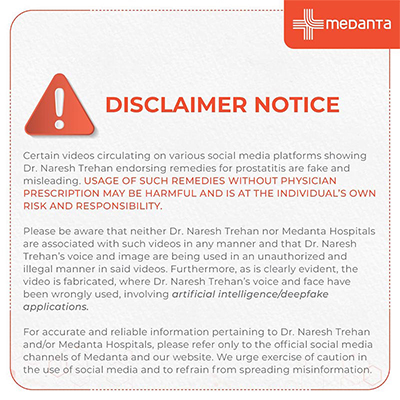Bronchiolitis Obliterans: Causes, Symptoms, Diagnosis and Treatment

TABLE OF CONTENTS
Introduction
The term "popcorn lung" refers to bronchiolitis obliterans. The smallest airways in your lungs are damaged by this disorder, which causes you to cough and feel out of breath. It can occasionally be brought on by inhaling a chemical used to flavor microwave popcorn. However, popcorn lung can also be caused by other substances or lung conditions.
Before transporting it to the cells in the rest of your body, your blood takes in oxygen in your lungs. Through the windpipe or trachea, air enters the lungs when we breathe in. The bronchi, which connect to the left and right lungs, are formed when our windpipe divides into two tubes.
These tubes divide repeatedly inside the lungs, much like a tree's branches. The tiniest of these branches, known as bronchioles, terminate in minuscule air sacs known as alveoli. The alveoli are where the blood takes up oxygen.
These tiny air channels become irritated and inflamed when you have a "popcorn lung." They become scarred as a result, which narrows them. You find it more difficult to breathe deeply as a result.
Why the name popcorn lung?
The condition was first discovered by researchers in workers who worked in a microwave popcorn plant, hence the name. Diacetyl, a flavouring agent used to give the popcorn a buttery flavour, was inhaled by the workers.
Diacetyl was employed as a flavour by other businesses. Workers from those other businesses who had inhaled diacetyl were diagnosed with bronchiolitis obliterans by medical professionals. Diacetyl is also included in the liquid used in vapes and electronic cigarettes. Additionally, incidences of the illness were discovered in workers at a coffee roasting facility.
Causes
The most frequent toxin to breathe in over time that results in bronchiolitis obliterans is diacetyl. Other toxins that have been related to bronchiolitis obliterans include:
Ammonia
Chlorine
Nitrogen oxides
Hydrochloric acid
Mustard gas, or sulphur mustard
Smoke from e-cigarettes and cannabis both contain acetaldehyde.
E-cigarette smoke contains formaldehyde, a very irritating chemical used in adhesives and construction products.
Sulphur dioxide created from burning fossil fuels releases metal oxide vapours, a consequence of welding.
In addition to environmental exposure, severe respiratory illnesses like RSV and some types of pneumonia or bronchitis can also lead to bronchiolitis obliterans. Rheumatic illness patients, such as those with rheumatoid arthritis, are also more likely to develop popcorn lung.
Additionally, nearly 50% of those who have lung transplants experience the illness within five years and are in danger of acquiring it if their body rejects the new organ. This syndrome is also referred to as bronchiolitis obliterans. Other transplant patients may also be at risk; after five years of receiving a bone marrow transplant from a donor, 10% of recipients develop bronchiolitis obliterans.
Bronchiolitis obliterans syndrome
This syndrome is the most typical form of lung transplant rejection among recipients of lung transplants, and it causes impaired lung function as a result of scarring to the tiny airways in the lungs. It may initially appear to be an infection.
While the condition develops in stages, not everyone who has it shows the symptoms in the same way. While one person might spend a long period in an early stage, another might move swiftly from one level to a more advanced stage. Spirometry, a lung function test, can be used to gauge the disease's severity.
Symptoms
Coughing, particularly during and after physical activity
Occasionally, coughing up mucous may occur
Dyspnea, especially before, during, and after exercise
Wheezing
Tiredness
Sweats during the night
A skin rash
Diagnosis
If you suspect you may have popcorn lung, be sure to discuss your concerns with a healthcare provider because the condition is sometimes misinterpreted as asthma, bronchitis, or emphysema. If you use e-cigarettes or have come into contact with substances associated with popcorn lung, let them know.
Your doctor will request a CT scan or X-ray of your chest to diagnose popcorn lung. A pulmonary function test is an additional option. This examination evaluates how well your lungs are working.
A surgical lung biopsy is the most reliable method of diagnosing popcorn lung.
For this kind of biopsy, general anaesthesia can be required to ensure a pain-free experience. Your chest will be cut by the surgeon, and a bit of lung tissue will be taken out. The lung sample will then be sent to a lab for evaluation.
The optimal diagnostic approach for your case will be determined with the advice of your doctor.
Treatment
Even though popcorn lung cannot be cured, medication can help you control the symptoms.
Limiting exposure to potentially dangerous poisons and chemicals is the best strategy to avoid developing popcorn lung. Make sure your workplace is safe, and if you smoke, stop using e-cigarettes and vaping equipment.
It's challenging for many people to stop on their own. It can require several tries as well. That's all right; keep trying. Don't be afraid to ask your care team or local resources for additional assistance.
Conclusion:
Bronchiolitis obliterans is a rare and progressive chronic disease. Workers at a microwave popcorn plant who had inhaled the flavouring chemical diacetyl were the first to develop this disease. As a result, bronchiolitis obliterans became known as "popcorn lung."





